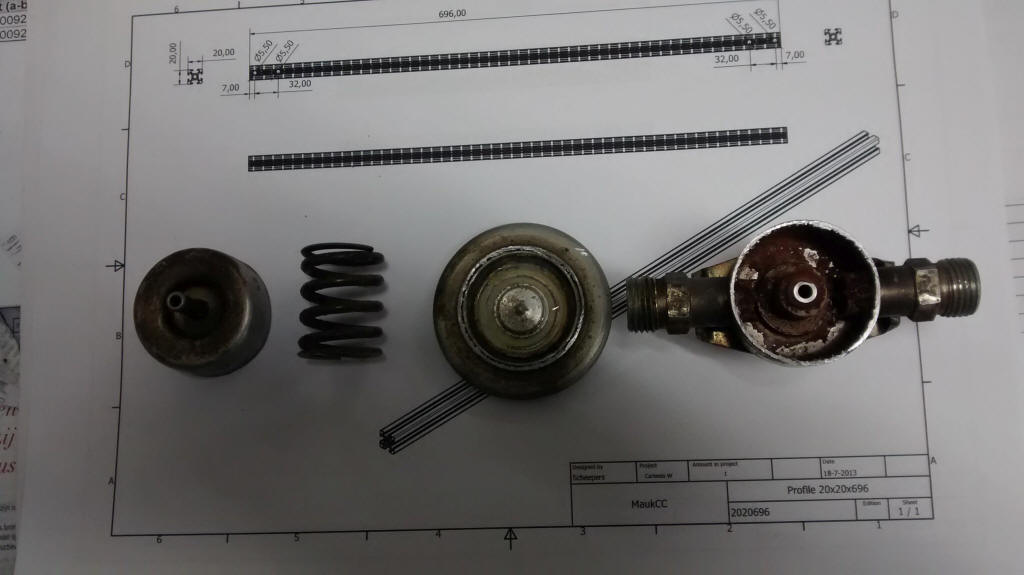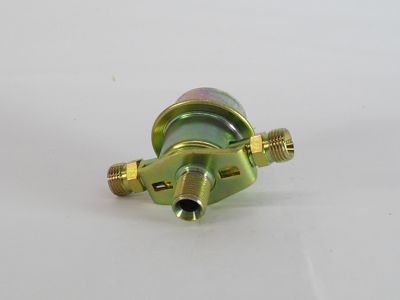
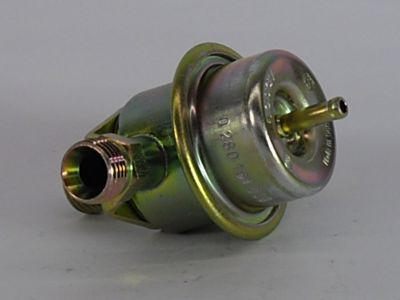


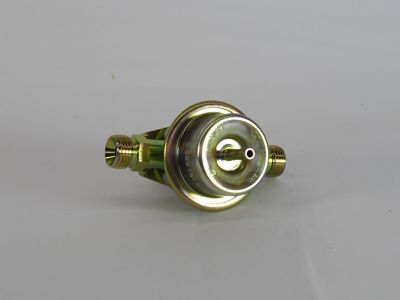
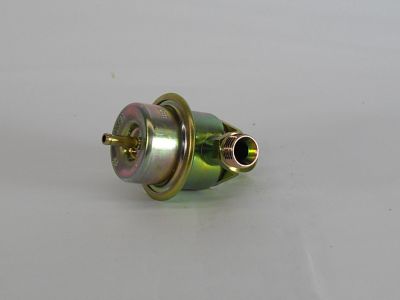
These parts are relevant for a Porsche 928:
| #5 | 928.110.202.00 | 0 280 161 008 | front of engine | Diaphragm pulsation damper | 928 MY 1983-1986 | 366 euro | |
| #5 | 928.110.202.01 | 0 280 161 034 | front of engine | Diaphragm pulsation damper | 928 MY 1987-1995 | 163 euro | alternative 930.110.202.22 |
| #3 | 930.110.602.01 | 0 280 161 035 | left side rear of engine | Diaphragm pulsation damper | 928 MY 1987-1995 | 153 euro | |
| #4 | 928.110.198.02 | 0 280 160 262 | right side rear of engine | Pressure regulator 3.0bar | 928 MY up to 6/1987 | 136 euro | |
| #4 | 928.110.198.04 | 0 280 160 297 | right side rear of engine | Pressure regulator 3.5bar | 928 MY from 7/1987-1995 911C2/4 MY89-94 |
237 euro |
alternative 928.110.198.25 |
Porsche calls this 928.110.202.01 in latest PET version also a pressure regulator.... while in older PET versions it was a diaphragm damper. Strange.
If a damper goes bad and leaks fuel into the vacuum line (and thus into the intake) this is what you see: MVI_9201.AVI
And a good one looks like this: MVI_9202.AVI
regards,
Theo
=======
Hello everyone,
My 86.5 Auto has been suffering from a hot start issue. Starts fine when cold,
but never when warm. Only way to start it when warm is to pour a few drops of
fuel down the air intake.
I've gone through all the general troubleshooting steps until I realized the
front fuel damper is not holding vacuum.
How do I safely bypass this damper so I can continue troubleshooting or run
while waiting for parts?
Thanks a bunch!
Tarek
------
Tarek, I found this while searching. It was originally posted by 2v4v.
Do NOT operate the car with a leaky vacuum diaphragm on either regs or damper.
There are two possible (and likely) outcomes -
1: FIRE! (this is bad. like terminal bad. I like shark, but not cooked with
gasoline)
2: HYDRO! (hydro-locking the motor by filling it with gasoline, this is also
distinctly non-bueno. can bend pistons, valves, and your leg from repeatedly
kicking yourself in the ass for trying to get away with it)
Both L and LH feed fuel from the front of the rail to the rear. The "IN" from
the pump feeds to a damp (er/ener) in either L or LH, then the fuel flow is
'split' to feed the individual fuel rails on either side. This initial damper is
to help mitigate the pressure waves that come out of the Bosch roller cell pump.
This is where the divergence occurs between the L/LH 2V and the LH 4V.
On the L/LH 2V cars, the fuel exits the back end of the rails, pressure is
regulated in the rails by allowing a certain amount of bypass flow. The bypassed
flow leaves the rails and returns to the tank.
The LH 4V cars have a setup that is, well, not exactly the same. The entrance to
the rails through a damper is the same but then things change. Upon leaving the
driver's side rail, the fuel passes through another damper (this is not a bad
thing, since a damper really belongs on the end, or even in the middle of the
rail, to damp the fuel pressure spikes that occur when the injectors cycle) then
gets to the lone fuel reg. The fuel rail on the passenger side does not get
equal treatment - it goes straight the same reg without the benefit of a damper
to help mitigate the same pressure waves that happen on the driver's side rail.
Fair? Nope. Functional? Well, at the time it was ok.
Current knowledge dictates neither setup as ideal, the later model even less
optimum than the earlier setup. Knowledge was not nearly what it is today, so by
the time Porsche really knew they could do a much better job on the fuel deliver
system, the 928 was selling nowhere near enough units to justify an update.
Hell, it made plenty of HP, why mess with it?
Dampers are an integral part of effective fuel pressure management. They absorb
the spikes that happen in the rail due to injector cycling and line pressure
variances due to the output characteristics of the Bosch roller-cell pump.
For those who are going to ask, the 2V L/LH update/grade fuel rails are ready to
test as soon as I get a couple of adapters that are on backorder. Ugh. That
project is sooo far behind schedule.
Here's the commonly accepted current state of the art (applicable to the 928
anyway)...
Damper on the end of each rail, follow through to the reg.
There are 2 different philosophies when it comes to regs.
Philosophy one: One reg per rail. Logic is that each rail is it's own
environment, and the reg can react fastest and most accurately to the individual
needs of the rail it controls by being close and not having to deal with
pressure waves from another rail. Those waves (from another rail) may be out of
sync with ones in the other rail, "bumping" the reg to bypass to release
pressure which it doesn't actually need to do for the other rail.
Philosophy two: One reg is adequate and can handle the fuel needs of most street
cars. The pressure waves are not a serious issue on a street car. Also, by
running both rails to the same reg, you "average" the pressure to both rails and
it's close enough.
Strictly speaking, you could do it either way. Some of the aftermarket regs
(S/X, Aeromotive) even have a diaphragm built in to the reg to help mitigate
pressure waves (their claim, not mine) without actually running a separate
damper at all.
As far as the solution suggested by the best available science (balancing
against a realistic budget) it would be the following:
Damper on the exit of the rail. Pass through style (like the 928's OEM Bosch).
Go straight to a fuel reg for each rail. Vacuum reference on the regs, not
really needed on the dampers. "Dead-end" style dampers can also be mounted at a
right angle to the rail, and are still pretty effective, though not quite as
good as a pass-through style at lower pressures.
Dampers are really most needed on a lower pressure (~40PSI) fuel system. If you
run a higher line pressure (~70 PSI) the effects of the injector cycling is less
pronounced. Really high pressure (100+ PSI) race setups don't bother with
dampers at all.
Rising Rate Regs: A solution, but more of a "workaround". They do provide extra
fuel under high draw conditions thus providing you with (some) of the fuel of
larger injectors when needed, without actually installing larger injectors and
resetting the ECM pulse width to match the new injectors.
They work, and for some minor performance improvements like
headers/cams/porting/etc., a RRR may be enough.
If you want optimum performance from a force-inducted scenario, there is no
substitute for larger correctly sized injectors, and some sort of programmable
engine management. Or at least, correctly sized larger injectors.
Fabio421
The 928 is equipped with two (different) fuel pressure dampers. Their job is to maintain constant pressure in the fuel rails and absorb pulsations due to the injectors opening. Each time an injector opens, there is a slight drop in fuel pressure. The Damper compensates for this temporary drop in pressure. It's basically a spring loaded device that keeps pressure up.
There's a third part of the equation and that is the fuel pump check valve.
This is a one way valve that prevents fuel pressure from leaking down after the
car is shut off.
By keeping the pressure up, even when the car is off, it enables the car to
start on the first few cranks - otherwise the system would have to build up
pressure before having enough fuel pressure to squeeze fuel thru the injectors -
taking 10 or 20 cranks before the engine will start.
When one of the dampers or FPR goes bad the car will be very hard to start and the only way to get it running is to hold your foot to the floor till it starts this will let air in to lean out the extra fuel mixture
One of the dampers is becoming hard to find OEM 928 110 202 00
These are the two dampers:
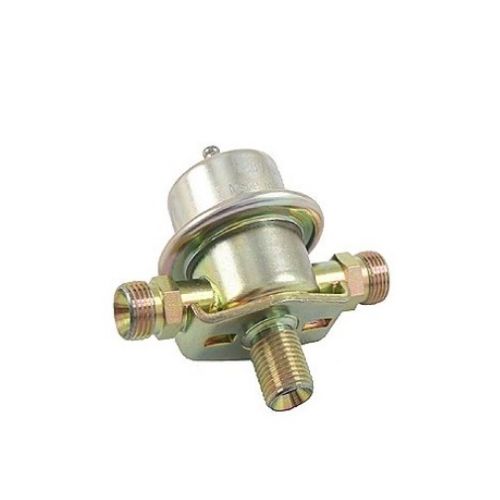
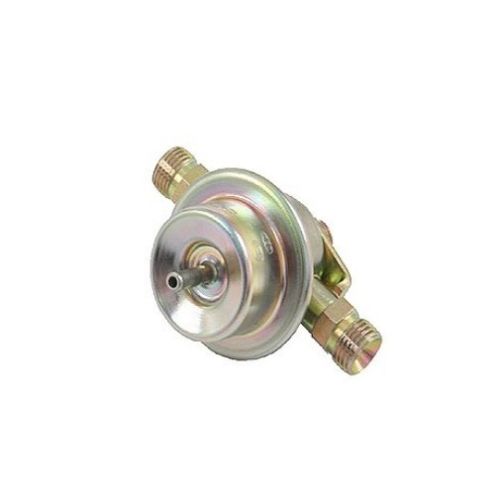
0 280 161 034 with the vacuum connection to adjust to manifold pressure
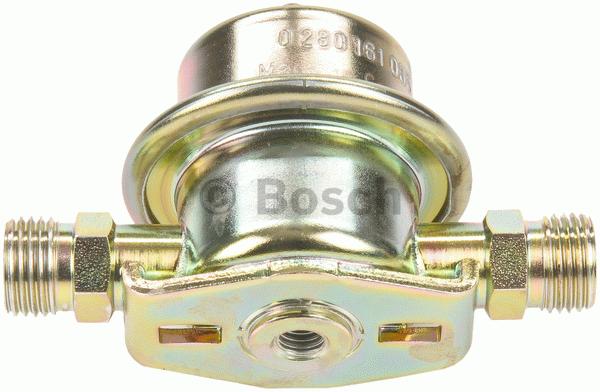
0 280 161 035
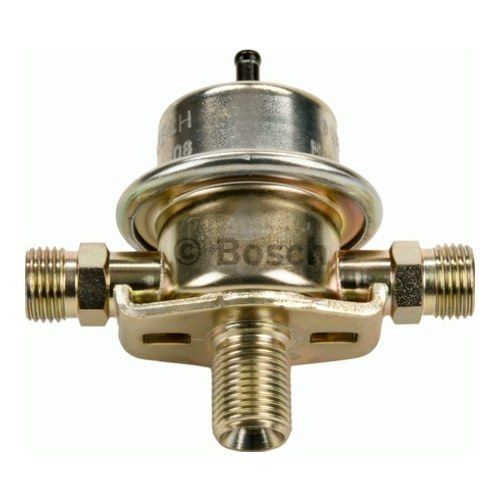
0 280 160 297
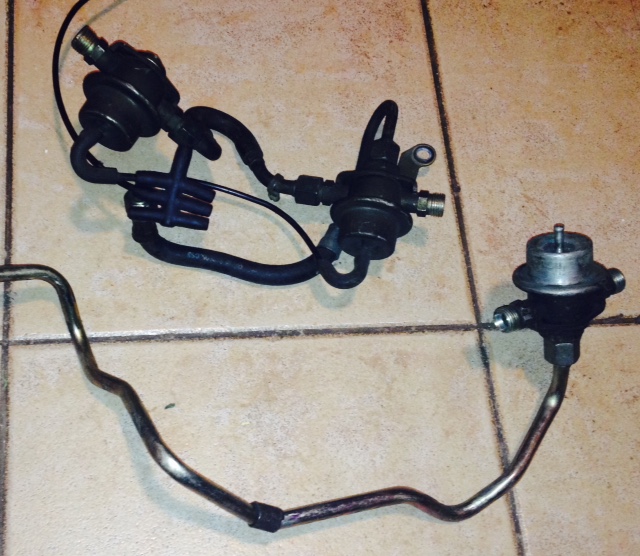
In side the dampers:
